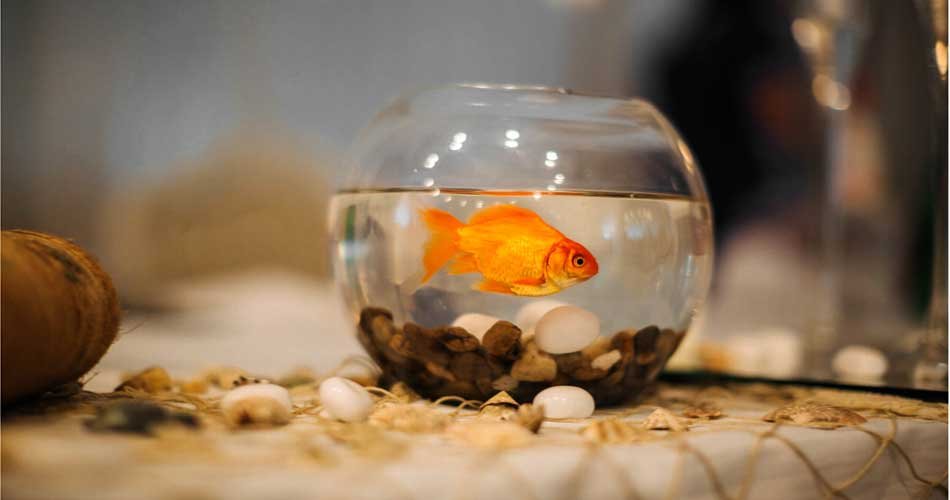Innovative Small Aquarium Ideas for Every Space
Designing a small aquarium is both fun and creative. You can explore endless possibilities with limited space. From unique fish selections to innovative decorations, small aquariums present a charming challenge. They fit perfectly in apartments, offices, or cozy corners. Small aquariums require less maintenance than large ones.
Yet, they can be just as mesmerizing. With clever design, even the tiniest tanks can become a captivating underwater world. This blog will guide you through exciting ideas. Get inspired to create your own aquatic masterpiece. Dive into the world of small aquariums and discover how to make a big impact with a little space.
Choosing The Right Size
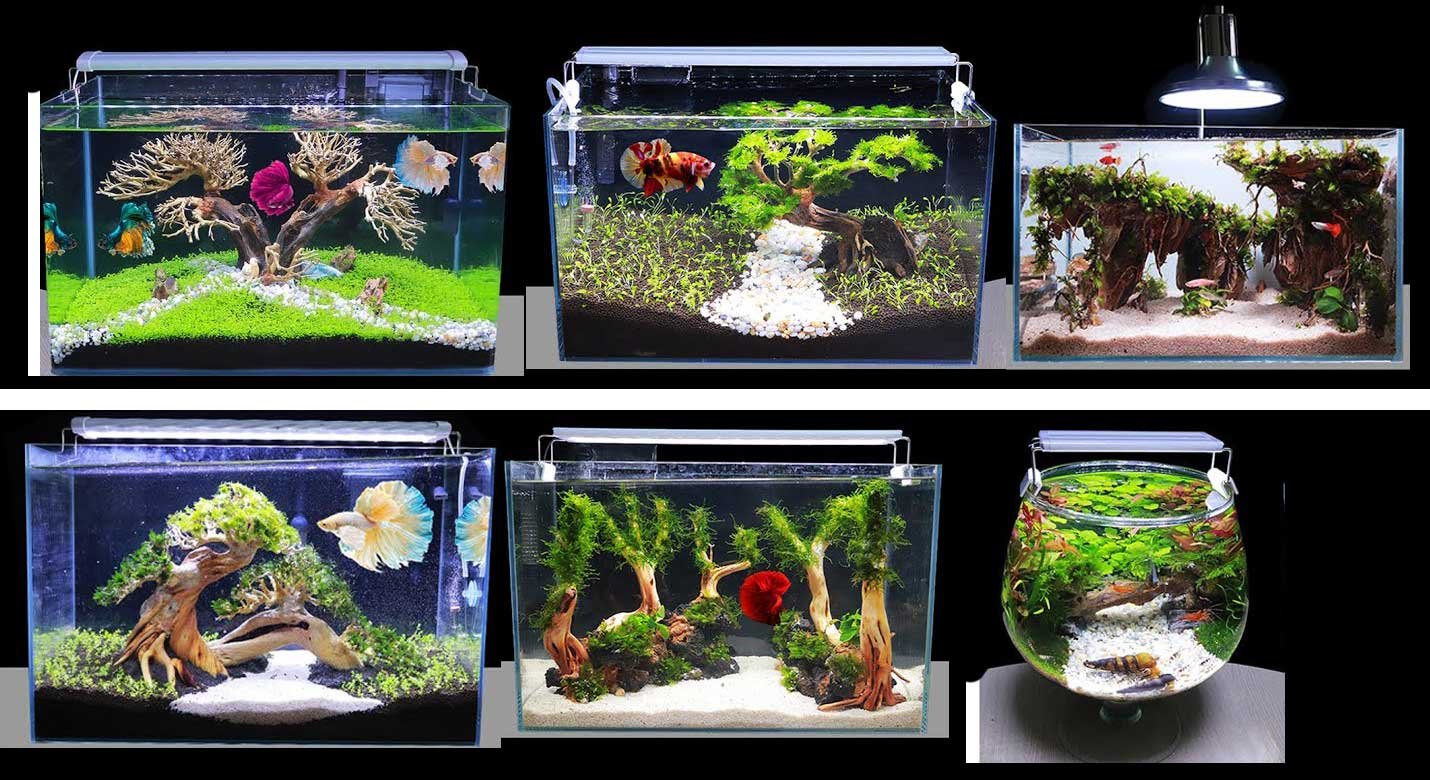
Choosing the right size for a small aquarium can be both exciting and challenging. The size of your aquarium plays a crucial role in determining the type of fish, plants, and decorations you can include. Selecting an appropriate size ensures a healthy environment for aquatic life and enhances the visual appeal of your space.
Whether you’re a beginner or a seasoned aquarist, finding the perfect balance between your living space and the needs of your aquatic friends is essential.
Space Considerations
Before deciding on the size of your aquarium, it’s important to evaluate the available space in your home. Consider where you plan to place the aquarium and how it will integrate with the existing decor. Here are some factors to keep in mind:
- Room size: Larger rooms can accommodate bigger tanks, while smaller areas might require a more compact solution.
- Furniture arrangement: Ensure the aquarium complements the room’s layout and doesn’t obstruct pathways.
- Natural light: Consider how sunlight affects the tank. Excessive light can lead to algae growth.
- Electrical outlets: Placement near outlets is necessary for filters, lights, and heaters.
To help visualize the available space, you might find a simple table useful:
| Room Type | Suggested Tank Size |
|---|---|
| Living Room | 20-30 gallons |
| Bedroom | 10-20 gallons |
| Office | 5-10 gallons |
Common Sizes
Small aquariums come in various sizes, each offering unique benefits. Understanding common sizes helps in choosing the right tank for your needs:
- 5-Gallon Tanks: Ideal for beginners, these tanks are easy to maintain and perfect for small fish or shrimp.
- 10-Gallon Tanks: A popular choice, providing more space for plants and additional fish species.
- 20-Gallon Tanks: Offers flexibility for a wider range of aquatic life, suitable for small communities.
- 30-Gallon Tanks: Suitable for experienced hobbyists, allowing for diverse ecosystems and larger species.
Choosing a tank size depends on the type of fish you wish to keep and their space requirements. Smaller tanks are easier to manage but limit your options. Larger tanks provide more freedom in terms of aquascaping and community building. Balancing your interests with the practical aspects of space and maintenance will lead to a satisfying aquarium experience.
Aquascaping Basics
Creating a small aquarium is an exciting project. It’s a chance to build a tiny underwater world. Aquascaping is the art of designing this world. It involves arranging plants, rocks, and other elements in a tank. The basics of aquascaping are simple. Choose the right components, place them creatively, and maintain the balance. Small aquariums are perfect for beginners.
They require less space and fewer resources. Yet, they offer immense satisfaction. Dive into aquascaping and unleash your creativity. Transform a simple tank into a living masterpiece.
Hardscape Elements
Hardscape elements are the backbone of any aquascape. They include rocks, stones, and driftwood. These materials form the structure of the aquarium. Use them to create depth and dimension. Choose rocks based on size and color. Larger rocks can serve as focal points. Smaller stones add texture and variety. Driftwood adds a natural feel.
It can mimic fallen branches in a forest stream. Placement is crucial. Arrange elements to guide the eye. Create pathways or hidden nooks. Use the rule of thirds to position objects. This enhances the visual appeal.
- Rocks: Select shapes that complement each other.
- Driftwood: Choose pieces that add a natural look.
- Balance: Ensure stability and harmony.
Avoid overcrowding. Leave space for plants and fish. This creates a balanced ecosystem. Hardscape elements should be secure. Use aquarium-safe adhesives if needed. Remember, hardscape is the framework. Plants and fish bring it to life.
Plant Selection
Plants are essential in aquascaping. They add color and life to the aquarium. Select plants based on size and growth rate. Fast-growing plants cover empty spaces quickly. Slow-growing ones require less maintenance. Consider lighting. Low-light plants are easier to maintain. They thrive under minimal lighting.
Highlight plants need brighter conditions. Choose plants that suit the tank size. Smaller tanks require compact species. Large leaves can overwhelm a small space. Here’s a table to help:
| Plant Type | Light Requirement | Growth Rate |
|---|---|---|
| Java Fern | Low | Slow |
| Anubias | Low | Slow |
| Hornwort | Moderate | Fast |
Mix different types for variety. Combine tall and short plants. Use foreground and background plants. This creates depth and interest. Ensure plants are healthy. Trim dead leaves regularly. Fertilize if necessary. Plants provide oxygen. They help maintain water quality. Choose wisely and watch your aquarium flourish.
Selecting Fish Species
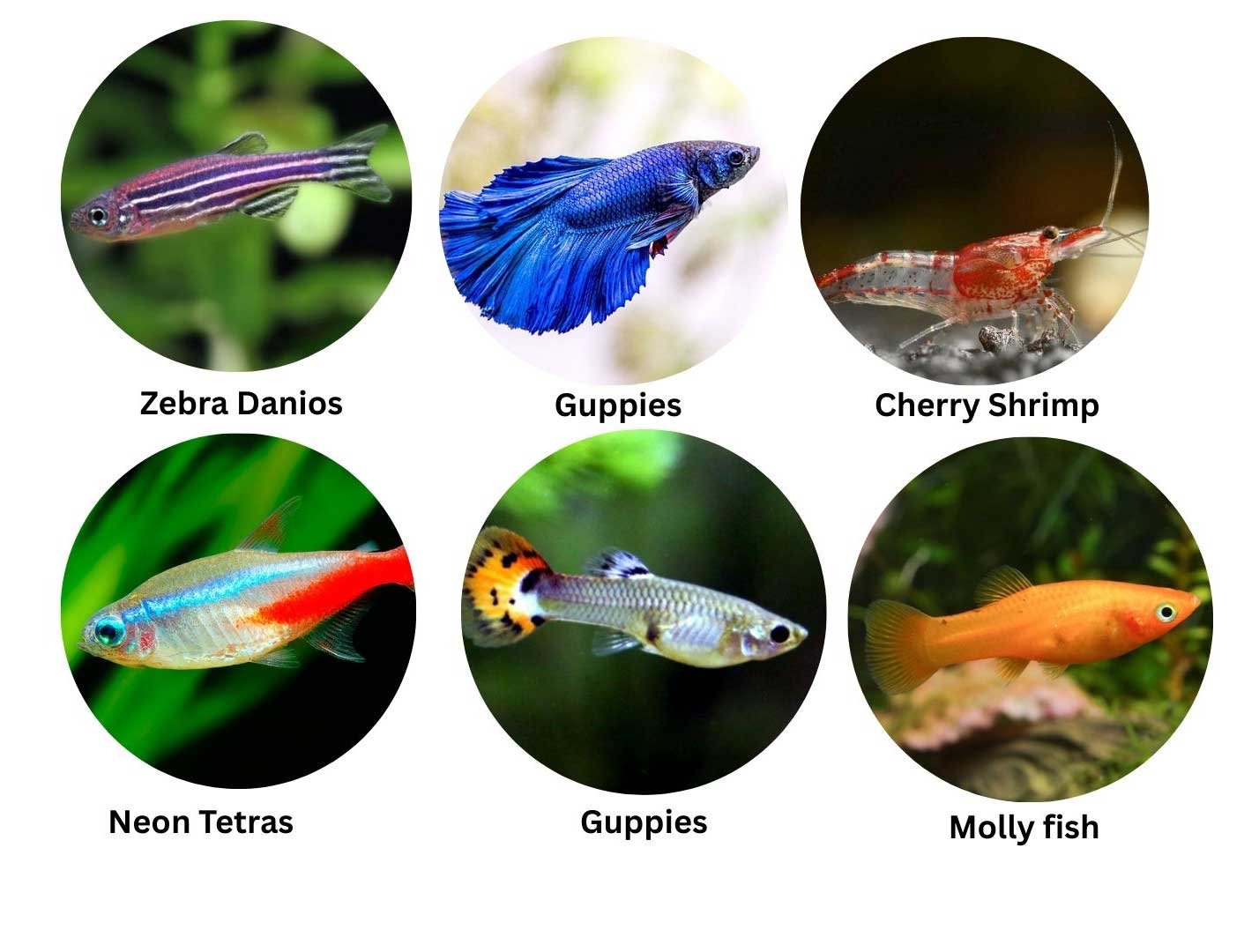
Creating a small aquarium can be a delightful hobby. It brings a piece of the aquatic world into your home. One important aspect of this hobby is selecting fish species. The right choice enhances the beauty and balance of your aquarium. Some fish thrive in small environments while others do not. It’s crucial to choose wisely to ensure a healthy ecosystem.
Compatibility Issues
Choosing fish species involves understanding compatibility issues. Not all fish get along. Some are aggressive, while others are peaceful. Aggressive fish can stress or harm others. To avoid problems, consider these points:
- Behavior: Choose fish with similar temperaments. Peaceful fish coexist better.
- Size: Avoid mixing large fish with small ones. Larger fish may see smaller ones as prey.
- Water Conditions: Ensure fish have similar needs. Check temperature, pH, and hardness.
Here’s a simple table to help:
| Category | Consideration |
|---|---|
| Temperament | Peaceful, Semi-aggressive, Aggressive |
| Water Temperature | Cold, Tropical, Marine |
| Size | Small, Medium, Large |
Understanding these factors helps create a harmonious aquarium. A balanced environment keeps fish healthy and happy.
Best Small Fish
For small aquariums, selecting the best small fish is essential. Many species thrive in limited space. Here are some top picks:
- Betta Fish: Known for their vibrant colors. They are hardy and easy to care for.
- Neon Tetras: Small, colorful, and peaceful. They do well in groups.
- Guppies: Popular for their bright colors and active nature.
- Zebra Danios: Hardy and active. They get along with most fish.
- Cherry Shrimp: Not fish, but a great addition. They help clean the tank.
Consider these points when choosing:
- Size at Maturity: Ensure they remain small.
- Care Level: Opt for low-maintenance species.
- Social Needs: Some fish need companions.
These fish are perfect for small aquariums. They add color and movement without overwhelming the space.
Maintaining Water Quality
Small aquariums bring a slice of nature into your home. They are perfect for hobbyists with limited space. But maintaining water quality is crucial. Poor water quality can harm your fish and plants. It can also make your aquarium look unappealing. Regular maintenance ensures a healthy environment. This section will guide you on keeping your small aquarium’s water clean and safe.
Filtration Options
Filtration plays a vital role in maintaining water quality. It keeps the water clear and free from harmful substances. There are several types of filters suitable for small aquariums:
- Internal Filters: These are compact and easy to install. They sit inside the tank and are ideal for small spaces.
- Hang-On-Back (HOB) Filters: These hang on the back of the tank. They provide excellent filtration without taking up space inside the tank.
- Sponge Filters: Simple and cost-effective. They use air pumps to filter the water and are great for small tanks with delicate fish.
Choosing the right filter depends on your tank size and the type of fish. Always check the filter’s capacity. It should match or exceed your aquarium’s volume. Regularly clean and maintain the filter to ensure it works efficiently. Here’s a quick comparison:
| Filter Type | Pros | Cons |
|---|---|---|
| Internal | Space-saving, easy installation | Less powerful |
| HOB | Powerful, space-efficient | Visible from the outside |
| Sponge | Cheap, gentle on fish | Limited filtration |
Testing Water Parameters
Regularly testing your water parameters is essential. It helps keep your aquarium environment stable and healthy. Important parameters include:
- pH Level: Measures how acidic or alkaline the water is. Most fish prefer a pH between 6.5 and 7.5.
- Ammonia: Toxic to fish. It should always be at zero.
- Nitrite and Nitrate: Nitrate is less harmful, but should be kept low. Nitrite should also be zero.
- Temperature: Keep your tank within the ideal range for your fish species.
Use a reliable test kit to monitor these parameters. Test the water weekly or when you notice any issues. Keeping logs can help you spot trends and react quickly to changes. Adjustments may be needed if parameters fall outside the safe range. Here’s a simple guide:
- Test pH and ammonia levels first.
- Check nitrite and nitrate levels next.
- Adjust the temperature as needed.
- Keep a record of your readings.
Consistent testing ensures your small aquarium remains a thriving aquatic ecosystem. It’s a small effort that pays off big in the health of your fish and plants.
Lighting Solutions
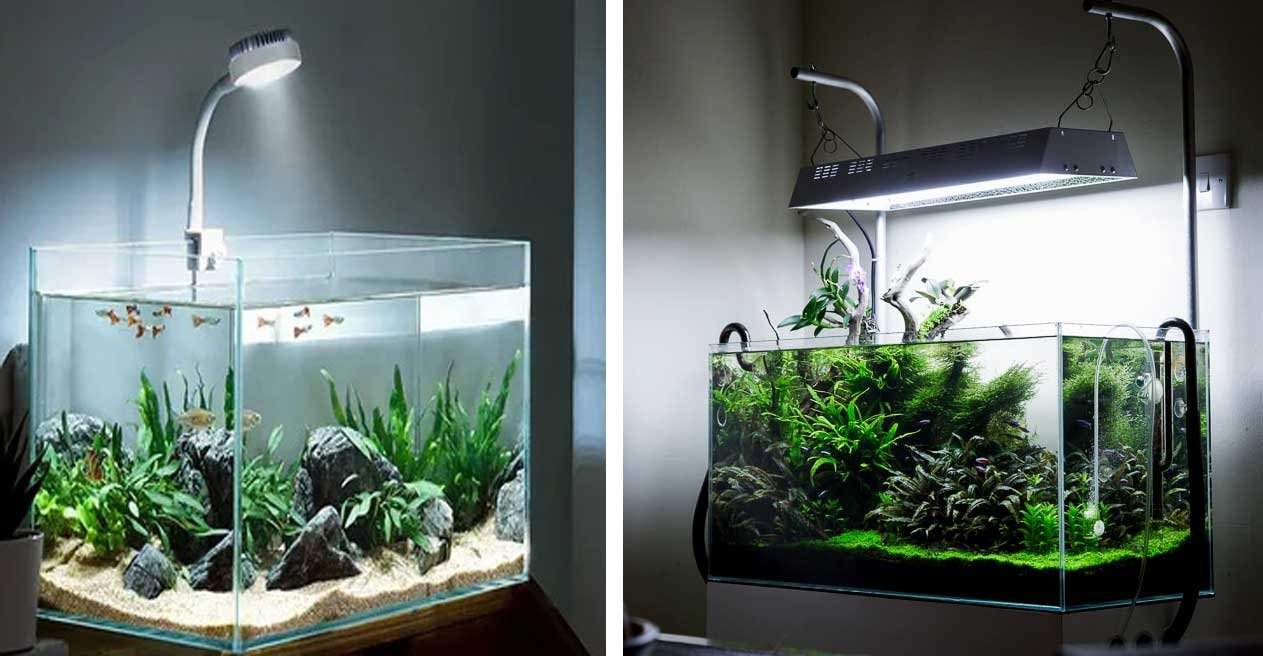
Creating a small aquarium is a delightful endeavor. It brings a piece of the underwater world into your home. One key aspect to consider is lighting solutions. Proper lighting enhances the beauty of the tank. It also supports the health of aquatic life. Small aquariums offer unique lighting challenges. Selecting the right type of lighting can make a significant difference. Let’s explore some effective lighting solutions for small aquariums.
Led Benefits
LED lights are a popular choice for small aquariums. They offer numerous advantages. First, they are energy efficient. They consume less power compared to traditional lights. This helps reduce electricity costs. Key benefits of LED lights include:
- Long lifespan. LEDs last much longer than incandescent bulbs.
- Low heat emission. They don’t heat up the water like other bulbs.
- Adjustable brightness. Many LEDs allow you to change the intensity.
- A variety of colors. You can use different colors to mimic natural habitats.
Here is a quick comparison between LED and other types of aquarium lights:
| Feature | LED Lights | Incandescent Lights |
|---|---|---|
| Energy Efficiency | High | Low |
| Heat Output | Low | High |
| Lifespan | Long | Short |
LEDs are versatile and can enhance the aesthetic appeal. They provide a stable environment for fish and plants.
Lighting Schedules
Lighting schedules are crucial for maintaining a healthy aquarium. Fish and plants need a regular cycle of light and dark. This mimics their natural environment. A consistent schedule reduces stress in aquatic life. Consider these tips for setting a lighting schedule:
- Provide 8-10 hours of light daily. This is ideal for most freshwater tanks.
- Use a timer. Automating the lighting schedule ensures consistency.
- Avoid sudden changes. Gradually adjust the lighting duration if needed.
- Observe the tank. If algae growth increases, the lighting time will be reduced.
Here’s a sample lighting schedule:
| Time | Activity |
|---|---|
| 8:00 AM | Lights On |
| 6:00 PM | Lights Off |
Setting the right lighting schedule creates a balanced ecosystem. It supports plant growth and keeps fish healthy.
Heating Requirements
Small aquariums can bring vibrant life to any space. They are perfect for those who love aquatic life but have limited space. One critical aspect of maintaining a healthy small aquarium is managing the heating requirements. Fish and plants thrive in specific temperature ranges.
Consistent temperatures are vital for their health and well-being. Understanding the heating needs of your aquarium ensures a balanced and thriving aquatic environment.
Choosing Heaters
Picking the right heater for your small aquarium is essential. A heater ensures your aquatic pets live in a comfortable temperature range. Here are some factors to consider when selecting a heater:
- Size of the Aquarium: Small tanks usually need less powerful heaters. Check the heater’s wattage and match it with your tank size.
- Type of Heater: There are different types of heaters available:
- Submersible Heaters: Fully submerge in the water and are good for consistent heating.
- Immersible Heaters: Only the heating element is in the water. Suitable for small tanks.
- Adjustability: Choose a heater with adjustable settings. This allows you to set the ideal temperature.
Here is a simple comparison table to help you decide:
| Heater Type | Features | Best For |
|---|---|---|
| Submersible | Fully underwater, consistent heating | All small tanks |
| Immersible | Partly underwater, less efficient | Very small tanks |
Choosing the right heater ensures a stable and healthy environment for your aquatic life. It prevents temperature fluctuations which can stress fish and plants.
Temperature Control
Maintaining the right temperature is crucial for a small aquarium. Fluctuating temperatures can harm fish and plants. Here are some tips to ensure proper temperature control:
- Use a Thermometer: Always have a thermometer in your tank. This helps you monitor the water temperature accurately.
- Regular Checks: Check the temperature daily. Make sure it stays within the desired range for your specific aquatic life.
- Placement of Heater: Position the heater where the water flow is good. This helps distribute heat evenly.
- Avoid Overheating: Set the heater to the right temperature. Avoid setting it too high as it can stress or kill fish.
Consider setting up a schedule to check the temperature. This ensures that your small aquarium remains a healthy habitat. If you notice drastic changes, inspect the heater for issues. Proper temperature control keeps your aquarium thriving and your pets happy.
Decor Ideas
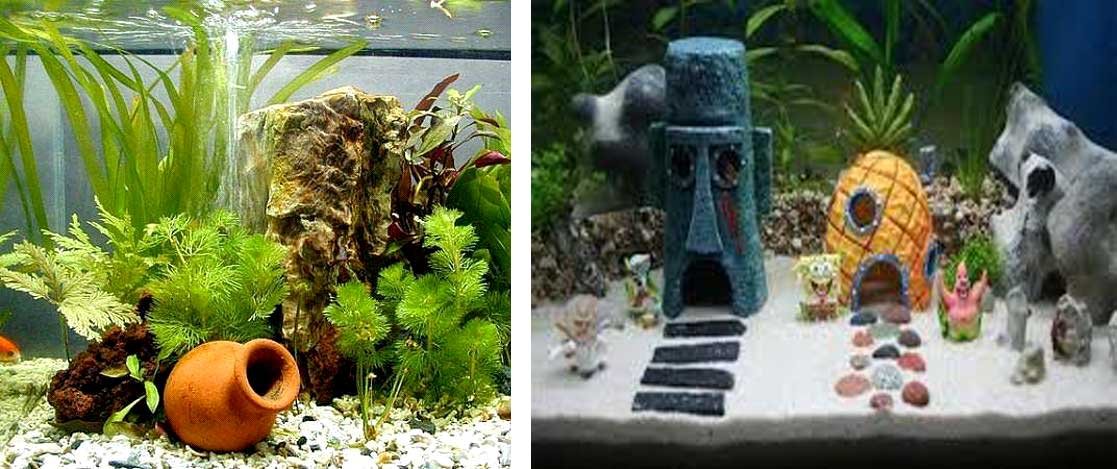
Decorating a small aquarium can be an exciting journey. With limited space, every piece counts. The right decor not only enhances the visual appeal but also creates a healthy environment for aquatic life. Let’s dive into some creative decor ideas. Explore both natural and artificial options to bring your mini water world to life.
Natural Decorations
Natural decorations can bring a touch of the wild into your small aquarium. They create a serene and authentic environment for your fish.
- Live Plants: They provide oxygen and reduce nitrates. Consider Java Fern and Anubias. Both thrive in low light.
- Rocks: Choose smooth stones. They should be aquarium-safe. Arrange them to form caves and hiding spots.
- Driftwood: It adds a rustic feel. Soak it first to remove tannins. It lowers pH naturally.
Here’s a simple table to guide you on natural decorations:
| Item | Benefits |
|---|---|
| Live Plants | Provide oxygen and reduce nitrates |
| Rocks | Create hiding spots and enhance aesthetics |
| Driftwood | Lowers pH and adds a natural appearance |
Natural decorations contribute to a balanced ecosystem. They offer shelter and comfort for your aquatic pets.
Artificial Options
Artificial decorations offer endless possibilities. They require less maintenance and are easier to handle.
- Plastic Plants: They come in vibrant colors. No pruning needed.
- Ornaments: Ships, castles, and more. They add character and fun.
- Backgrounds: Use colorful backdrops. They create depth and enhance the theme.
Consider these factors for artificial decorations:
| Type | Features |
|---|---|
| Plastic Plants | Bright colors, no maintenance |
| Ornaments | Adds character, various themes |
| Backgrounds | Enhances depth, easy to change |
Artificial options are perfect for those who prefer vibrant colors and themes. They are easy to clean and replace, ensuring your small aquarium always looks fresh and inviting.
Common Mistakes
Setting up a small aquarium is a delightful hobby, offering a slice of aquatic life in your home. Yet, many enthusiasts make common mistakes that can lead to problems. These errors can affect the health of your fish and the beauty of the aquarium. By understanding these pitfalls, you can create a thriving mini-ecosystem.
Overstocking
Overstocking is a frequent mistake in small aquariums. It might seem tempting to add many colorful fish to your tank. However, this can lead to several issues:
- Increased Waste: More fish produce more waste. This can lead to poor water quality, which harms fish health.
- Limited Space: Small tanks have limited space. Fish need room to swim and explore.
- Stress: Overcrowding causes stress. Fish may become aggressive or ill.
To avoid overstocking, follow the “one inch of fish per gallon” rule. This means if your fish is two inches long, you need at least two gallons of water for it. Here’s a simple table to help:
| Fish Length (inches) | Minimum Gallons Needed |
|---|---|
| 1 | 1 |
| 2 | 2 |
| 3 | 3 |
Think of the welfare of your fish. A balanced environment means healthy, happy fish.
Neglecting Maintenance
Maintenance is crucial for a small aquarium’s health. Ignoring it can lead to disaster. Regular care ensures a clean and safe habitat for your fish. Here are some key maintenance tasks:
- Water Changes: Replace 10-15% of the water weekly. This keeps toxins low.
- Filter Cleaning: Clean the filter monthly. A clogged filter can’t do its job.
- Check Parameters: Test water regularly for pH, ammonia, and nitrites.
Use a simple schedule to track these tasks:
| Task | Frequency |
|---|---|
| Water Change | Weekly |
| Filter Cleaning | Monthly |
| Water Testing | Weekly |
Even small aquariums need love and attention. Regular maintenance prevents problems and supports a healthy environment.
Frequently Asked Questions
What Fish Do Well In A Small Tank?
Betta fish thrive in small tanks. Neon tetras, guppies, and dwarf gouramis also do well. Consider adding shrimp or snails for variety. Ensure proper filtration and regular maintenance for a healthy environment. Avoid overcrowding to maintain water quality and fish health.
What Fish Can Live In A 4-Gallon?
Suitable fish for a 4-gallon tank include Betta fish, small Tetras, and Dwarf Guppies. Avoid overcrowding to ensure healthy living conditions. Shrimp and snails can also be great tank companions. Regular maintenance and monitoring are vital to keep the ecosystem balanced and thriving.
How Do You Make A Small Self-Sustaining Aquarium?
Create a self-sustaining aquarium by choosing a balanced ecosystem. Include live plants, small fish, and beneficial bacteria. Ensure proper lighting and filtration. Maintain water quality by monitoring parameters. Avoid overfeeding and regularly check for algae growth. This setup supports a natural, low-maintenance environment.
Can Any Fish Live In A 1-gallon tank?
A 1-gallon tank is too small for most fish. Betta fish can survive, but it’s not ideal. Consider shrimp or snails instead. Ensure regular water changes and proper filtration for any aquatic life. Prioritize larger tanks to promote healthier environments for fish.


